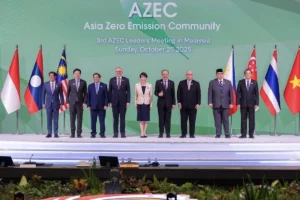As the Covid-19 pandemic spreads around the world, wartime metaphors abound. And, with what amounts to a war economy now in place, attention has inevitably turned to post-war reconstruction. It is self-evident that, without any clear idea of when the emergency will be over, we must begin planning now to deal with its aftermath.
Experience here and elsewhere after the two world wars provides lessons on what to do, and what not to do.
In the aftermath of what was then called the Great War, governments around the world sought a rapid return to the pre-war world of the gold standard and the free market. Little was done to ensure that soldiers returning from the front and those who had been working in war-related industries could find new jobs.
The result was depression in most of developed world. Australia’s unemployment rate reached 11% in 1921, and was never below 6% during the 1920s.
The response to World War One was a mistake
The postwar failure to deliver security and prosperity to the mass of the people set the stage for the rise of dictators like Mussolini, who seized power in Italy in 1922, and for Hitler’s first attempted coup, the “Beer Hall Putsch” of 1923.
All of these mistakes were magnified still further in the Great Depression of the 1930s, which led directly to the renewal of world war on an even larger scale in 1939.
Even as World War II raged, the Allies were determined to ensure that this time, the postwar period would not be one of depression and injustice.
At the global level, the Bretton Woods conference of 1944 established a system of fixed exchange rates and created the World Bank and the International Monetary Fund (IMF).
These bodies were supposed to prevent international financial crises and allow governments to maintain full employment, a goal which was sustained for 25 years after the war.
We acted differently after World War Two
In Australia, the Commonwealth Bank was given the responsibility for central banking. It was eventually split into the Reserve Bank, which ran monetary policy, and the Commonwealth savings and trading banks, which operated for almost half a century under public ownership until they were privatised in stages by the Hawke, Keating and Howard governments in the 1990s.
Reliance on government to manage the economy was bolstered by the contrast between the disaster of the Depression and the success of the WWII economy in mobilising all available resources, including workers who had long been unemployed and apparently unemployable.
This point was made eloquently in the post-war White Paper on Full Employment:
Despite the need for more houses, food, equipment and every other type of product, before the war, not all those available for work were able to find employment or to feel a sense of security in their future.
On the average during the twenty years between 1919 and 1939 more than one tenth of the men and women desiring work were unemployed. In the worst period of the depression, well over 25% were left in unproductive idleness.
By contrast, during the war no financial or other obstacles have been allowed to prevent the need for extra production being satisfied to the limit of our resources.
The dramatic response to the coronavirus pandemic has shown, again, that tolerating high levels of unemployment is a choice, not an inexorable requirement of a market economy.
For a long time, we chose full employment
The experience of the depression and war made it obvious that in a complex modern economy no one was safe from the risks of unemployment or inability to work through illness or age.
Old distinctions between the “deserving” and “undeserving” poor were abandoned in favour of a comprehensive commitment that no one should be left out of the shared prosperity made possible by technical progress.
But in the decades since the breakdown of the Bretton Woods system in the early 1970s, these zombie ideas have crept back, beginning with the bashing of “dole bludgers” in the early 1970s (these were supposed to be the young people, my generation, many members of whom are these days tut-tutting at the alleged slackness of Millennials and Gen-Zeders).
A final consequence of the war was a massive expansion in public debt, which reached reached 100% of annual gross domestic product. Despite expressions of concern, it was managed without any serious problems thanks to steady growth in both real and nominal GDP.
This is one instance where the logic of exponential growth works in our favour. If the economy grows at 7% a year, it will double over 10 years. It means a debt equal to 60% of GDP at the beginning of the decade will be only 30% of GDP at the end. A rate of 7% could be achieved if the economy consistently delivered its full potential growth rate of 3.5%, and inflation also ran at 3.5%.
But achieving such rapid growth requires both a commitment to full employment, and an abandonment of the exclusive focus on inflation targeting that has dominated monetary policy since the 1990s, with results ranging from disappointing (in Australia) to disastrous (in the case of austerity in the Eurozone).
The path we choose this time will matter
The first step in this process should be a reordering of priorities to place the restoration and maintenance of full employment ahead of sticking to the ultra-low inflation rates of recent years.
This could be signalled by the Reserve Bank and government adopting a nominal GDP target, set either in levels or in rates of growth.
As with World War II, the end of the pandemic will see the gradual relaxation and removal of the drastic controls on economic activity that are necessary today.
But we should resist any attempt to return to the market liberal economy of the past few decades.
Not only has it proven to be of no use in dealing with crises like the pandemic, it has regularly generated crises of its own, such as the global financial crisis, forcing governments to come to the rescue.
The lesson of pandemics, wars and financial crises is that a modern society needs a strong government with a strong commitment to providing security and prosperity.
source : the coversation












